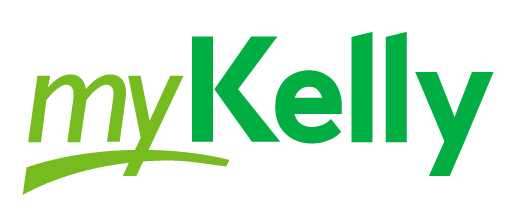Safety - Performance - Impact: Training qualified substitute teachers.

There’s no doubt that substitute teachers are heroes. The best ones allow learning to continue when teachers are absent. And while they cover millions of classrooms each year, many states no longer require them to have an education background. That's why it's crucial for school districts to provide proper training and offer continuous development opportunities to ensure a qualified substitute teacher is leading class.
Substitute educator training is a different strategy.
By investing in their development, districts help substitute teachers maintain normalcy in the classroom and minimize disruptions. The substitute educators also become familiar with educational standards and curriculum requirements. They're also more likely to exhibit professionalism when interacting with students, parents, and school staff. The impact of training is profound—resulting in a more safe environment for students to continue learning.
Our team at Kelly Education has worked with thousands of schools across the nation for more than 25 years. In 2022-23, our substitute teachers covered more than 4 million assignments. Our success in delivering qualified educators is largely due to our ability to develop these skills:
- Adaptability: Since substitute teachers often step into a classroom for a short-term period, sometimes with little notice, they must be able to adapt quickly to different student personalities, learning levels, and classroom dynamics.
- Fast decision-making: They must be able to quickly decipher and execute lesson plans left by the regular teacher or improvise when plans are not available.
- Breadth of knowledge: Since they may work across various schools and grade levels, they require a broad understanding of different curricula and disciplinary procedures.
Stages of training and development.
As with any role, you can't expect substitute teachers to understand the nuance of their work right away. Skill development should be delivered in a gradual and meaningful way to have impact. We have found that quality training needs to start even before hiring. As a best practice and part of our screening process, our prospective substitute teachers complete a module that offers a preview of the job responsibilities and personality characteristics required to work in a school setting.
Once hired, develop substitute teachers at this cadence to achieve increasing levels of performance and engagement:
Onboarding and Orientation
Onboarding should include a thorough orientation that outlines the school's policies and procedures, safety protocols, and expectations for classroom management and student behavior. During onboarding, give a tour of the school grounds and an overview of technological resources, such as the school's student management system. We also suggest assigning the substitute teacher a buddy or mentor for all those unexpected questions that pop up.
Training
School districts should offer comprehensive training for substitute teachers covering topics related to classroom management, lesson planning, and student behavior. Examples of areas to cover include:
- Introduction to the school district's curriculum
- Proper techniques for handling disruptive behavior and disciplinary issues
- Basic first aid and emergency procedures, including evacuation drills and lockdowns
- Procedures for reporting child abuse or suspected abuse
- Technology resources for the classroom
Professional Development
Offering ongoing professional development (PD) opportunities for substitute educators is where many districts lack resources, but it's crucial for growth, engagement, and retention. PD can be taught via online coursework or alongside full-time faculty during in-person training sessions. At Kelly Education, we offer a steady cadence of free, non-mandatory PD to our substitute teachers. Sample topics include:
- Curriculum development strategies
- Assessment and evaluation techniques
- Teaching techniques for English language learners and students with special needs
- Classroom management techniques for student engagement and behavior modification
- Communication skills to excel in school settings
Jennifer Hart, the Chief of Human Resources and Administration at the Aiken County Public School District in South Carolina says that after working with Kelly Education there are far fewer complaints coming into her office about the substitute teachers and it's made a positive impact on the district's substitutes’ performance. Hart explains more in this case study.
Focus on targeted topics.
Let’s drill down a little deeper into which topics have the most impact on a substitute educator's success. Most of our partner districts want substitute teachers to be proficient in teaching skills, safety protocol, and classroom management—so that they are equipped to handle whatever may come their way.
Safety protocol:
✔️ Show them where to locate emergency drill information so that they can review for their assignment.✔️ Ensure they are aware of exits, alarms, school specific code words, or other protocols.
✔️ Tell them where to get a classroom key to lock the door.
✔️ Provide instructions on reporting threats, suspicious activity or person, and injuries to students and staff.
Classroom management/student behavior:
✔️ Set clear expectations for behavior and consequences.
✔️ Share information on how to keep students on task with differentiated instruction.
✔️ Communicate positive behavior reinforcement with the students
✔️ Create a plan whereby the teacher articulates the potential consequences of negative behavior.
✔️ Share the school's bullying and harassment policy.
Teaching skills:
The substitute educator’s role in the continuity of the learning process can't be overlooked. Their teaching skills not only impact the academic progress of students during the regular teacher's absence but also influence students' perception of learning. We develop and refine these skills over time:

- Understanding the curriculum: Familiarity with district or school curriculum standards, guidelines, and expected learning outcomes. This includes understanding the different subjects and topics taught at various grade levels.
- Lesson planning and organization: Long-term substitute teachers should understand how to plan a lesson effectively, breaking down complex topics into manageable parts.
- Effective communication: Explaining complex concepts in a simple and understandable manner. This includes active listening to address student questions effectively.
- Adapting teaching styles: Adapting teaching styles based on the learning needs of a diverse student population. This can include techniques for visual learners, auditory learners, and kinesthetic learners.
- Helping students with special needs: Understand the unique requirements of these students and how to adapt lessons accordingly.
- Classroom technology proficiency: How to use interactive whiteboards, projectors, student management systems, and online learning platforms to enhance lesson delivery and student engagement.
- Creativity in teaching: How to make lessons more engaging and impactful using games, storytelling, role-plays, etc.
- Evaluation and feedback: Assessing student understanding through formative assessments and providing constructive feedback to help students improve.
The training investment is well worth the outcome.
To grow a high-quality substitute teacher pool, the best school districts invest in high-quality training programs that engage the specific substitute teacher skillset—managing classrooms, handling unexpected situations, and engaging students of different age groups and learning abilities.
At Kelly Education, we believe that all educators should have 24/7 access to training and development. We constantly prioritize and adapt our own programs to keep our substitute teachers up to date with the current best practices in their respective roles. To learn more about our proprietary curriculum visit our training webpage.
For further assistance in growing, retaining, or managing your substitute educator talent pool, consider a consultation with our Kelly Education team or explore our Comprehensive Blueprint for CHROs: Your Guide to Building an Effective Substitute Teacher Program.
----
About the author: Bill Brancato is the Vice President of IT Systems and Digital Strategy for Kelly Education. In his role, he directs the work of the substitute educator training and development team. With more than 10 years' experience in educational staffing, he's passionate about improving the quality of education for K-12 school districts by solving their challenges related to staffing via a data-driven approach.
View Related:
K-12 School Districts
You need the best and brightest.
We can help solve your most complex talent challenges – both today and in the future – by delivering high–quality talent that moves education forward.
Contact us at 800.Kelly.01 and one of our agents will administer your request. Or, if you'd prefer, fill out the form to submit an email.





